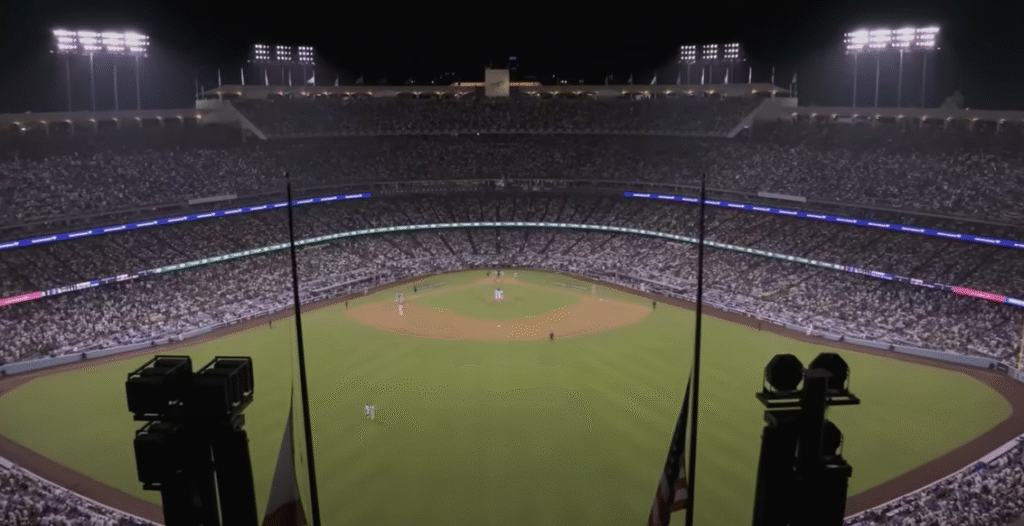Baseball has always been associated with tradition, but it is unique in terms of economics. Major League Baseball does not have a salary cap, in contrast to sports like hockey, basketball, or football. Rather, it depends on a system aptly referred to as the “luxury tax,” which is essentially a monetary fine for excessive spending. The goal of this system was to hold teams accountable, but it has been incredibly ineffective at discouraging billionaires who consider taxes to be insignificant annoyances.
For teams that surpass the threshold, the luxury tax structure becomes increasingly severe, with repeat offenses subject to a tax of up to 110%. The Dodgers and Mets, however, accept those expenses as a necessary part of their pursuit of championships. The system ostensibly discourages excess but does nothing to stop it, which is remarkably similar to wealthy people paying premium fees to avoid waiting lists.
For decades, players have opposed a cap through the MLBPA. They have a very clear objection: a cap artificially limits their worth. The union’s leader, Tony Clark, contends that a cap penalizes the very employees who generate the income and entertainment. Many players feel as though their value is limited while owners reap limitless rewards. That sentiment is not unique to baseball; it is echoed in discussions in a variety of industries where employees resist wage restrictions that give corporations the upper hand.
Major League Baseball – Salary Rules Overview
| Category | Details |
|---|---|
| League | Major League Baseball (MLB) |
| Salary Cap | No hard salary cap (unique among major U.S. leagues) |
| Current System | Competitive Balance Tax (“Luxury Tax”) |
| Threshold 2025 | $237 million base threshold (progressive penalties above this) |
| Penalty | 20%–110% on overages depending on repeat status |
| Salary Floor | None (teams can spend minimal amounts if they choose) |
| Highest Payroll 2025 | New York Mets – $323 million |
| Lowest Payroll 2025 | Miami Marlins – $67 million |
| Commissioner | Rob Manfred |
| Players Union | MLB Players Association (strongly opposes cap) |
| Reference | MLB – Luxury Tax Explanation |

However, fans frequently have different opinions. After watching Juan Soto sign his $765 million contract with the Mets, a Cincinnati Reds fan questions why their team is never able to acquire such talent. The difference between the Marlins’ $67 million payroll and the Mets’ $323 million payroll is more than just a financial one; it also symbolizes optimism, rivalry, and the belief that your team can succeed. Rob Manfred acknowledged that small-market fans start the season feeling like they’ve been kicked out, which is especially harmful for a sport that relies heavily on loyalty.
Nevertheless, the paradox is intriguing. Since the Yankees in 2000, baseball has not had a recurring champion. Three teams from outside the sport’s financial elite—the Cubs, Royals, and Nationals—have taken home the trophy. Baseball seems so adaptable in contrast to the NBA, where dynasties flourish. Money is influence, not fate, as demonstrated by the unpredictable nature of its postseason.
It is impossible to ignore the cultural component of this discussion. While underdog victories like the Royals’ 2015 victory became tales of tenacity, the Yankees’ financial dominance turned them into villains. Not only does the lack of a cap influence payrolls, it also shapes stories. It adds depth to the drama by producing heroes to cheer for and villains to root against. It’s ironic that in some cases, imbalance creates more excitement than uniformity.
Owners are still split, though. While John Fisher of the A’s barely makes $60 million despite his enormous wealth, Steve Cohen of the Mets spends extravagantly. Fisher views baseball as a business that demands discipline, while Cohen views it as entertainment where stars must shine. Their divergent ideologies demonstrate why reaching an agreement on a cap is still difficult.
As the deadline for collective bargaining in 2026 approaches, discussions are getting more heated. According to a recent CNBC report, league officials are debating between a salary floor and a cap. This combination may be very effective in avoiding both excessive and insufficient spending. In addition to reducing lopsided contracts at the top, a cap-floor system would compel teams with smaller budgets to make greater player investments. On paper, it appears to be a significant improvement over the current model.
However, implementing such changes might lead to another labor conflict. Both sides are still plagued by the memory of the 1994 strike that ended the World Series. To be ready for a possible lockout, the MLBPA has already accumulated a “war chest” of money. This conflict between owners and players is a reflection of larger economic conflicts in which workers in billionaire-dominated industries compete for pay. Even in a sport as romanticized as baseball, the debate feels remarkably effective in highlighting labor-management tensions.
The influence of celebrities is also indisputable. Both Soto’s $765 million contract and Shohei Ohtani’s $700 million contract have garnered media attention outside of the sports world. Like Beyoncé in music or Elon Musk in technology, these megadeals turn athletes into cultural icons. Most players, however, never sniff such wealth. Earnings could be redistributed by a cap, but owners might also have more power to restrict growth generally.
It’s interesting to note that baseball’s competitive balance may not be as shattered as some critics claim. Even the wealthiest teams cannot guarantee victory, and since 2000, almost half of the league has taken home a championship. The Mets haven’t won a World Series since 1986, despite their massive spending. In nearly forty years, the Dodgers have only won twice, despite their budgets. In contrast to leagues where financial gain virtually ensures success, baseball’s unpredictable nature makes it incredibly versatile.
